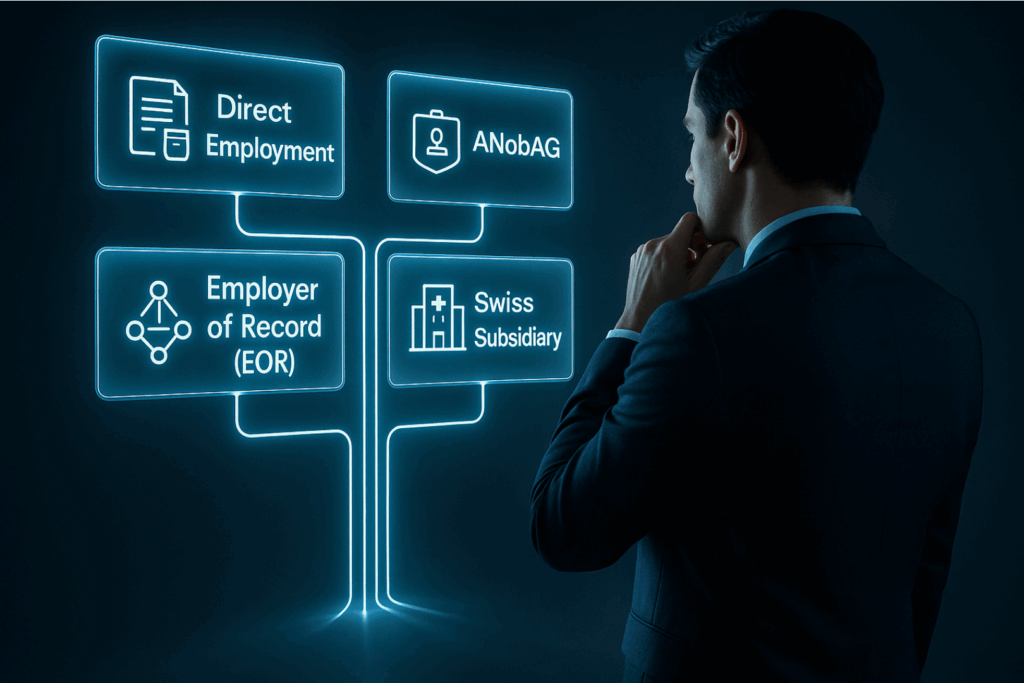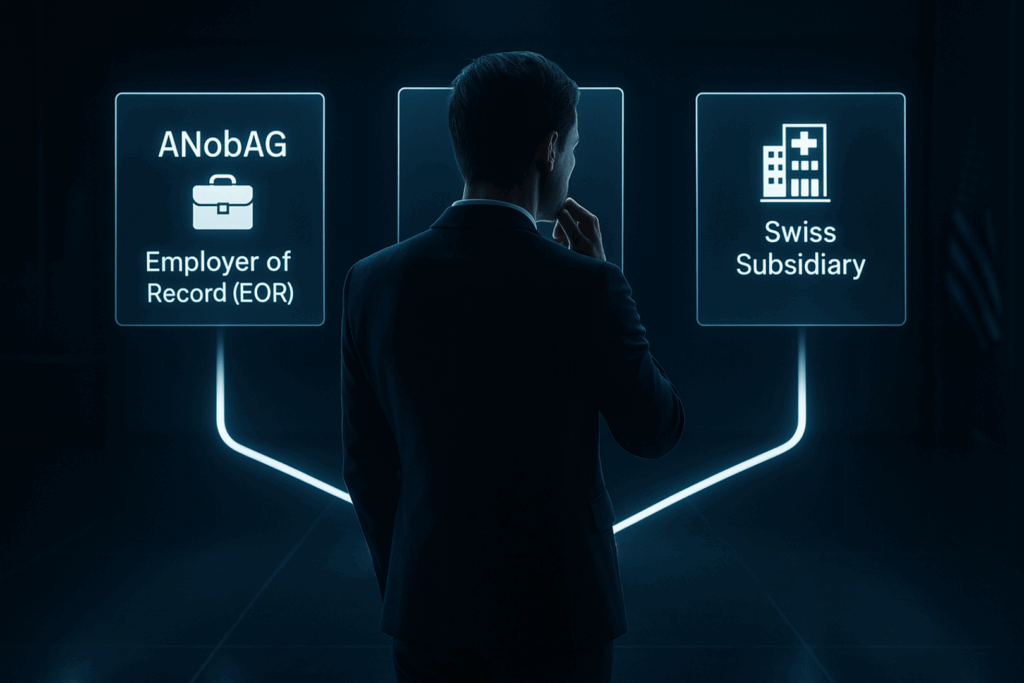Tax Optimization Through Pension Fund Purchases

Many pension funds advertise voluntary purchases and present attractive calculation models to interested parties. What is often not mentioned is that the voluntary purchase into the pension fund is not worthwhile for everyone and does not always help with tax savings. In this article, we will show you how voluntary pension fund purchases work, when they are worthwhile and what tax-efficient alternatives there are.
How Does the Purchase Into the Pension Fund Work?
Regulation for Employees
From an annual salary of CHF 21,510, it is compulsory to take out an occupational pension plan, i.e. the person subject to insurance must pay into a pension fund of his or her choice. Compulsory insurance must be taken out for salaries up to CHF 86,040. In the compulsory plan, the pension fund guarantees a minimum interest rate at which the pension assets are later paid out again, at least if there is no case of restructuring at the pension fund. If you have a higher salary, you can have this insured in the supplementary plan, i.e. buy into the pension fund voluntarily. It is possible to choose two different pension funds for the mandatory and the extra-mandatory part.
Voluntary Purchase
Due to the minimum interest rate in the compulsory part, it is recommended to buy in first. If this is not possible, or if it has already been exhausted, the only option left is the supplementary plan. In this case, it is very important how high the coverage ratio of the pension fund is. A coverage ratio of more than 100 percent is ideal. If it is 100 percent or even lower, contributors must reckon with lower interest rates on their savings in the long term and lower payouts later on. If you are not employed, you can buy into the pension fund voluntarily.
Special Regulations for Self-Employed Persons Moving in From Abroad
Restrictions also apply to persons moving in from abroad who have never belonged to a Swiss pension fund. The annual purchase payment may not exceed 20 percent of the insured salary. This ceiling applies for the first five years after joining a Swiss pension fund. Special regulations must also be observed by self-employed persons who have not yet been affiliated with a pension fund but have made use of the “large” Pillar 3a – i.e. have paid in more than the maximum amount for salaried employees (currently CHF 6826).
Self-employed persons can make 3a contributions of up to 34,128 francs per year, up to a maximum of 20 percent of their net income. If these persons take out new insurance with a pension fund, the purchase potential is reduced by the capital saved in the large pillar 3a. The calculation depends on the age or year of birth and the year of deposit. For a detailed calculation, ask your financial planner.
Avoiding Pension Gaps
Insured persons have the option of buying into the full regulatory insurance benefits at any time if a so-called contribution gap exists. Such a gap occurs, for example, with every salary increase, because a higher income automatically opens up opportunities to save for a higher pension. Contribution gaps can also occur when you change jobs to an employer with better pension fund benefits, when you become unemployed, when you move from abroad, when you take a career break due to having children, continuing education or a sabbatical, and in the event of a divorce when your pension assets are divided.
Information on whether or not there is a pension gap can be found in the pension fund statement, which is sent to you by the pension fund every year – or extraordinarily if you change jobs. If there are considerable gaps, it is worthwhile to make staggered purchases over several years. This allows you to break the tax progression several times, which leads to greater tax savings overall.
When Is the Right Time to Buy In?
If you are insured with a pension fund with a high degree of coverage, you can also buy into the super-mandatory plan voluntarily at an earlier stage. This has three advantages. Firstly, the pension assets increase more strongly due to the compound interest effect and you get paid out more. Second, the contributions are deducted from taxable income, which reduces the tax burden. And third, the pension assets are not subject to wealth tax until retirement or early withdrawal.
If you are insured with a pension fund with a low funding ratio, you should take your time when making a voluntary purchase into the extra-mandatory system. It is advisable to buy in only a few years before retirement, as this allows you to better assess how the pension fund’s financial situation will develop and whether benefit reductions are to be expected.
Three-Year Lock-up Period
After a purchase, you may not withdraw any capital from the pension fund for three years, because otherwise tax avoidance is suspected. The blocking period applies not only to the sum of the purchases made, but to the entire savings balance in your pension fund. You must therefore have made purchases three years before retirement if you want to draw the capital instead of the pension at the time of retirement. Otherwise, you will be liable for an additional tax payment.
The three-year lock-up period does not only apply to lump-sum withdrawals at the time of retirement. It also applies to so-called advance withdrawals. For example, you cannot withdraw capital for the purchase of owner-occupied residential property for three years after purchasing a pension fund. Conversely, anyone who has made an advance withdrawal of pension fund assets for the purchase of residential property cannot buy back in until this amount has been repaid.
Who Benefits From Buying Into the Pension Fund for Tax Purposes?
Voluntary purchase into the pension fund is particularly worthwhile for high earners who are at the upper end of the tax progression curve. This is where the highest tax rate must be paid on income. Purchasing into the pension fund reduces the tax burden, because the contributions are not added to the taxable income. When filing a tax return, the pension fund contributions are deducted from the total income, thus reducing the taxable income. In years in which you earn a lot, the purchase is therefore most favorable from a tax perspective.
Married Couples Benefit Even More
Since working married couples in Switzerland file a joint tax return in which both incomes are added together, there may be another advantage. If the two partners are registered with different pension funds, they can compare the benefits and financial situation of the funds and then pay into the better of the two.
Why Caution Is Advised When Making Voluntary Purchases Into the Pension Fund
The pension fund is the mandatory retirement provision in Pillar 2 of the Swiss social security system. The contributions paid in are invested to generate a return. Contributors are then granted a minimum interest rate on their contributions so that when they retire, they get paid more than they paid in – or so the theory goes.
Pension Funds in Financial Difficulties
In practice, however, things have unfortunately changed somewhat in recent years, as pension funds have increasingly run into difficulties due to a lack of legal reforms. The reason: the contributions already paid in by all contributors are not enough to finance their pensions, as life expectancy is rising steadily and returns are falling.
For this reason, a redistribution is taking place in most pension funds, with a large part of the current pensions being paid directly by the active contributors. For current contributors, this means that fewer contributions can be invested to generate a return on the capital market. As a result, returns and thus interest rates are falling.
If the invested contributions do not achieve the desired return on the capital market, which often happens in times of economic weakness, the pension funds may fall short of funding. This is the worst-case scenario, because then the pension fund has to initiate a restructuring in order to be able to continue paying the current pensions. Even if you have only paid into the pension fund voluntarily, you will not be able to get back all the contributions you have already paid in. Therefore, it is very important to choose a pension fund that has the highest possible coverage ratio. Then the risk of underfunding is the lowest.
Alternatives to Buying Into the Pension Fund
For your retirement provision, you have other options besides the pension fund, which also have their advantages and disadvantages.
Pillar 3a
Taxes can also be saved by means of a private old-age provision by paying a contribution every month into a private old-age provision insurance. The prerequisite is that you have an income from employment that is subject to AHV contributions, e.g. you are employed or self-employed. Private individuals cannot pay into pillar 3a.
Contributions to pillar 3a can be deducted from income in the tax return. If you finally withdraw the paid-in money from the pension plan, a capital withdrawal tax is incurred, which varies depending on the canton of residence, but is lower than the income tax, which is why pillar 3a is often used to save taxes.
Pillar 3b
Instead of voluntarily buying into the pension fund, or if you cannot pay into pillar 3a, you can invest your assets elsewhere, e.g. on the capital market or in real estate. Please note that this does not necessarily result in tax benefits for you; on the contrary, your tax burden may also increase. However, if you compensate for the higher burden with good returns, this is also a viable way to provide for old age.
Conclusion: Pension Funds Can Help You Save Taxes
Voluntary purchases into the pension fund can be worthwhile from a tax perspective. Those who are able to do so should choose a pension fund with the highest possible funding ratio for the supplementary plan and pay into it early in order to benefit from the compound interest effect and reduce their taxable income.
Purchasing can be disadvantageous if the pension fund runs into financial difficulties. Then, in the worst case, the contributor receives back less than the guaranteed pension assets. If you are not sure whether buying into the pension fund is the best alternative for you, consult a tax expert. He or she will calculate for your individual case which option will save you the most taxes in the long run.
Tax Return Cost Calculator
Do you seek a quick idea of the cost of our tax return service? If we have sparked your interest, you can send it to us without reservations, as it is a non-binding request. We will contact you promptly to discuss your situation with you.


